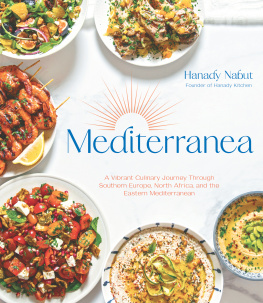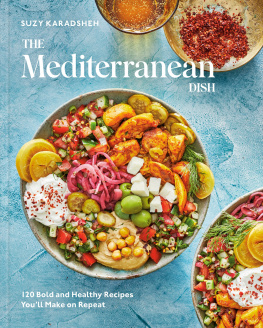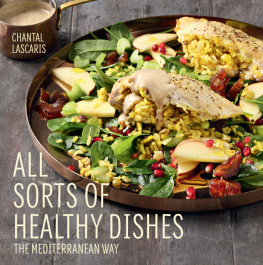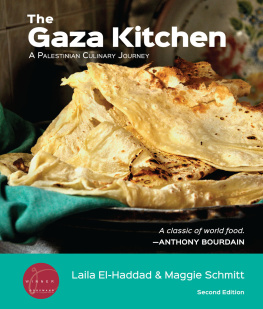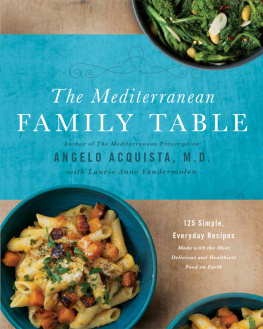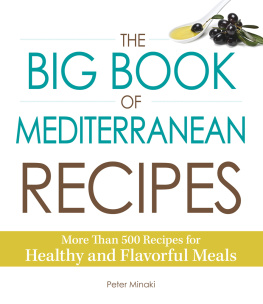Hanady Nabut - Mediterranea: A Vibrant Culinary Journey Through Southern Europe, North Africa, and the Eastern Mediterranean
Here you can read online Hanady Nabut - Mediterranea: A Vibrant Culinary Journey Through Southern Europe, North Africa, and the Eastern Mediterranean full text of the book (entire story) in english for free. Download pdf and epub, get meaning, cover and reviews about this ebook. year: 2022, publisher: Page Street Publishing, genre: Home and family. Description of the work, (preface) as well as reviews are available. Best literature library LitArk.com created for fans of good reading and offers a wide selection of genres:
Romance novel
Science fiction
Adventure
Detective
Science
History
Home and family
Prose
Art
Politics
Computer
Non-fiction
Religion
Business
Children
Humor
Choose a favorite category and find really read worthwhile books. Enjoy immersion in the world of imagination, feel the emotions of the characters or learn something new for yourself, make an fascinating discovery.
- Book:Mediterranea: A Vibrant Culinary Journey Through Southern Europe, North Africa, and the Eastern Mediterranean
- Author:
- Publisher:Page Street Publishing
- Genre:
- Year:2022
- Rating:5 / 5
- Favourites:Add to favourites
- Your mark:
Mediterranea: A Vibrant Culinary Journey Through Southern Europe, North Africa, and the Eastern Mediterranean: summary, description and annotation
We offer to read an annotation, description, summary or preface (depends on what the author of the book "Mediterranea: A Vibrant Culinary Journey Through Southern Europe, North Africa, and the Eastern Mediterranean" wrote himself). If you haven't found the necessary information about the book — write in the comments, we will try to find it.
Bright and Deeply Flavorful Dishes From Every Corner of the Mediterranean
Gather your friends and family for a culinary experience not soon to be forgotten: with Mediterranea, Hanady Nabut, founder of Hanady Kitchen, offers 60 authentic and exciting recipes that are as succulent as they are accessible, accompanied by stunning photography. From Hanadys Palestinian and Spanish heritage and straight to your plate, these profoundly delectable farestasty mezze and grains; mouthwatering seafood, meat, and poultry; heavenly desserts; and moreare meant to be shared by many and relished slowly, in the great Mediterranean tradition of eating with gusto.
Whether you are new to the cuisine, you are a home cook looking for everyday inspiration, or you want an easy-yet-delicious meal for your next family gathering, with Hanadys passionate guidance, youll be making crowd-pleasing feasts for the eyes and soul in no time. Additionally, youll have plenty of table conversation fodder, as each dish offers a fascinating peek into various flavor profiles and recipe variations from region to region, as well as a deep dive into the history of Mediterranean spices.
With spectacular recipes like Tahini and HoneyPoached Salmon, Braised Lamb Shanks with Tamarind, Saffron Churros with Floral and Orange Syrup, and Fried Eggplant with Carob-Maple Sauce, youll never cease to be amazed and inspired. Come to the table hungry and curious, and be prepared to fall in love with all the vibrancy the Mediterranean has to offer.
Hanady Nabut: author's other books
Who wrote Mediterranea: A Vibrant Culinary Journey Through Southern Europe, North Africa, and the Eastern Mediterranean? Find out the surname, the name of the author of the book and a list of all author's works by series.

